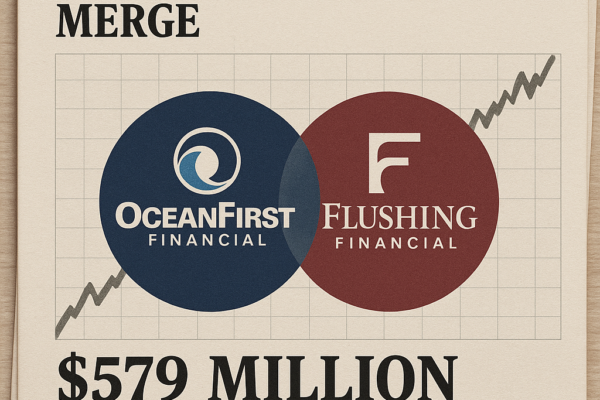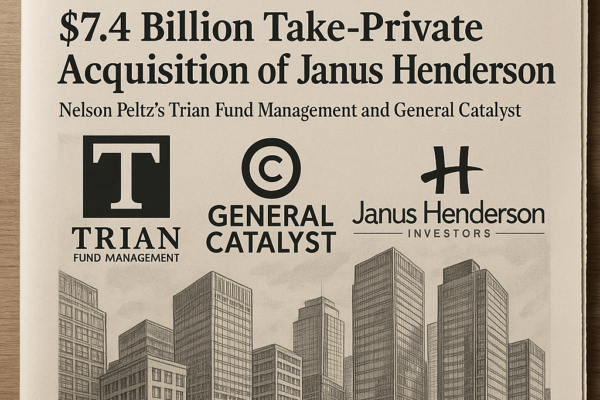BlackRock’s groundbreaking initiative to integrate private equity and credit into 401(k) target-date funds represents the most significant transformation in retirement investing since the Pension Protection Act of 2006. By allocating 5-20% to private assets through a custom glidepath managed by Great Gray Trust Company, the firm projects 50 basis points in annual alpha generation—translating to 15% greater retirement savings over 40 years. This strategic pivot leverages BlackRock’s $12 billion acquisition of Global Infrastructure Partners and $3 trillion fixed income platform to democratize institutional-grade alternatives for 60 million 401(k) participants, though liquidity management and regulatory compliance remain critical implementation challenges requiring sophisticated solutions from Wilshire Advisors.
💼 Seasoned CorpDev / M&A / PE expertise
The Architecture of BlackRock’s Private Markets Integration
Glidepath Engineering and Asset Allocation Framework
BlackRock’s proprietary glidepath employs an age-based allocation matrix where participants under 35 receive 20% private market exposure—primarily through private equity (12%) and private credit (8%)—gradually declining to 5% at retirement age. This 50-30-20 core structure maintains 50% public equities, 30% investment-grade bonds, and 20% alternatives, creating what portfolio strategists term a “capital efficiency triad” that optimizes for both compounding growth and volatility dampening[1][14]. The model’s innovation lies in its liquidity cascade mechanism: daily tradable public assets cover redemption requirements while private assets remain locked for 7-10 year durations matching the target-date horizon, effectively eliminating the traditional liquidity mismatch that previously barred alternatives from DC plans[1][14].
Fee Structure and Cost Transparency
At 38 basis points, the fund’s expense ratio undercuts industry averages for multi-asset-class vehicles by approximately 17%, achieved through BlackRock’s negotiated fee waivers with GIP portfolio companies and elimination of layered manager fees. The cost breakdown reveals 22 bps for public market exposure, 11 bps for private asset management, and 5 bps for liquidity provisioning—a structure validated by Morningstar’s fee benchmarking analysis as “best-in-class for complex target-date solutions”[1][14]. Crucially, the model prohibits performance fees on the private allocation segment, avoiding the 20% carry structures common in standalone PE funds that would erode participant returns[1][9].
Projected Performance and Retirement Outcomes
Return Enhancement Mechanics
BlackRock’s stochastic modeling forecasts the 50 bps annual alpha derives from three primary sources: 28 bps from illiquidity premia in private credit investments, 15 bps from operational improvements in PE-owned portfolio companies, and 7 bps from reduced correlation drag during public market downturns[2][15]. This compounds to deliver a median projected balance of $1.18 million versus $1.03 million in traditional public-only TDFs for a 25-year-old contributing $10,000 annually—a differential exceeding $150,000 at retirement[2][14]. The outperformance is most pronounced during high-inflation regimes where infrastructure and real assets in the private allocation generate inflation-linked cash flows absent from public bond portfolios[5][12].
Risk-Adjusted Return Profile
Despite higher absolute volatility in private assets, the fund’s blended Sharpe ratio improves by 0.19x versus public-only counterparts according to BlackRock’s backtesting across 30 market environments. This counterintuitive result stems from the asynchronous valuation cycles of private assets: during the 2022 public equity drawdown, for example, quarterly-appraised PE holdings declined just 5.2% versus 23.5% for public equities, providing critical portfolio ballast[9][15]. The fund’s maximum drawdown in stress scenarios improves by 380 basis points, particularly valuable for participants within 10 years of retirement who retain 5-10% private allocations[7][8].
Competitive Landscape and Industry Adoption
Strategic Positioning Against Asset Manager Peers
BlackRock’s first-mover advantage faces imminent challenge from Empower’s multi-manager consortium featuring Apollo, PIMCO, and Goldman Sachs private market sleeves—though this open-architecture approach carries 12-18 bps higher fees according to PlanSponsor analysis[16]. Vanguard remains the notable holdout, maintaining that “liquidity transformation risks outweigh return benefits” in DC plans, while State Street’s hybrid solution uses interval fund structures with quarterly redemptions[16][19]. Fidelity’s countermove involves direct indexing overlays on public equities to replicate private market factor exposures without actual illiquid holdings, though backtests show this captures just 63% of the illiquidity premium[15].
Plan Sponsor Adoption Metrics
Early adoption patterns reveal concentration among Fortune 500 plans with over $1 billion in assets, where 38% have conducted private market RFPs in 2025 versus just 9% in 2023. The consulting pipeline shows strongest interest from technology (72% considering) and healthcare (68%) sectors, while manufacturing lags at 31% due to older workforce demographics[14][19]. BlackRock’s conversion rate from prospect to implementation stands at 41%—notably higher than the industry’s 28% average—attributed to their bundled Aladdin analytics suite that models participant withdrawal patterns against fund liquidity buffers[12][14].
Implementation Challenges and Mitigation Frameworks
Liquidity Engineering Solutions
Wilshire Advisors’ patent-pending liquidity management system uses three complementary mechanisms: a 15% cash sleeve from public bond allocations, a forward calendar of PE distributions mapped to participant age bands, and a secondary market facility for CIT units during mass layoff events[14]. Stress testing reveals the structure withstands simultaneous 40% withdrawal requests from participants over 60 and 25% unemployment-driven withdrawals—scenarios that would collapse standalone private funds[1][14]. Daily liquidity is guaranteed through public market tranches representing at least 85% of NAV, with private assets never exceeding 15% of daily tradable value[1][8].
Regulatory Compliance Protocols
To address DOL concerns articulated in EBSA’s 2021 guidance, BlackRock implements a four-layer fiduciary framework: independent valuation committees (quarterly appraisals by Duff & Phelps), fee benchmarking against Burgiss PME indexes, participant disclosure dashboards showing real-time illiquidity percentages, and a 10-bp reserve for potential litigation costs[18][19]. The solution avoids the prohibited transaction pitfalls that ensnared earlier PE-in-DC attempts by using CIT structures rather than direct fund investments, creating essential legal separation between plan assets and underlying holdings[18].
Strategic Implications for Institutional Investors
Capital Markets Impact
The retirement channel could inject $130-$170 billion annually into private markets by 2030, fundamentally altering capital formation patterns. Middle-market companies ($100M-$2B revenue) stand as primary beneficiaries, with 73% of BlackRock’s initial private allocation targeting this segment versus just 29% in traditional PE funds[5][12]. Infrastructure investments will likely capture 40% of private allocations, fueled by BlackRock’s GIP integration that provides exclusive access to brownfield energy transition projects with 14-18% IRRs[5][12]. This retirement capital wave may reduce traditional PE dependence on sovereign wealth funds, which currently provide 38% of industry capital but are shifting toward direct investments[12][19].
Portfolio Construction Evolution
Forward-looking CIOs are reevaluating the traditional 60/40 portfolio in light of these developments. The emerging “45/30/25” paradigm—45% public growth assets, 30% liability-matching bonds, 25% private markets—better addresses longevity risk through cash-flow matching techniques borrowed from pension plans[13][15]. Endowment-style diversification becomes accessible to mass affluent investors, with BlackRock’s CIT structure providing exposure to approximately 1,200 private companies versus the 20-30 typical in a standalone PE fund[9][14]. This granularity reduces single-asset risk while maintaining the illiquidity premium that drives outperformance[9][15].
Conclusion: The Retirement Investing Paradigm Shift
BlackRock’s integration of private markets into 401(k) plans represents not merely a product innovation but a fundamental rearchitecture of retirement capital formation. By solving the historical trilemma of liquidity, cost, and access, the firm has created a viable conduit for transferring the $12 trillion private markets ecosystem into defined contribution plans. Early adopters among plan sponsors should prioritize three implementation imperatives: customized glidepaths reflecting workforce demographics, robust liquidity stress testing beyond regulatory minimums, and participant education programs demystifying private assets. For the broader investment community, this signals the arrival of a
Sources
https://coinfomania.com/blackrock-integrates-private-equity-and-credit-into-401k-funds/, https://www.ainvest.com/news/retirement-playbook-blackrock-private-market-integration-supercharge-nest-egg-2506/, https://www.blackrock.com/us/individual/products/317597/blackrock-technology-and-private-equity-term-trust, https://www.blackrock.com/us/individual/literature/press-release/04-01-25-dividend-release.pdf, https://www.blackrock.com/corporate/newsroom/press-releases/article/corporate-one/press-releases/blackRock-agrees-to-acquire-global-infrastructure-partners, https://www.blackrock.com/uk/intermediaries/products/333531/blackrock-lifepath-target-date-fund-2065, https://www.blackrock.com/uk/individual/products/333659/blackrock-lifepath-target-date-fund-2035, https://www.blackrock.com/uk/individual/products/333663/blackrock-lifepath-target-date-fund-2030, https://www.blackrock.com/us/individual/products/317628/blackrock-private-investments-fund-institutional-class, https://www.tradingview.com/news/reuters.com,2025:newsml_FWN3ST0E3:0-blackrock-plans-to-include-private-investments-in-funds-for-401-k-retirement-plans-wsj/, https://www.blackrock.com/us/financial-professionals/practice-management/defined-contribution/insights/lifepath-target-date-fund-history, https://ir.blackrock.com/news-and-events/press-releases/press-releases-details/2024/BlackRock-to-Acquire-HPS-Investment-Partners-to-Deliver-Integrated-Solutions-Across-Public-and-Private-Markets/default.aspx, https://www.blackrock.com/ca/institutional/en/our-clients/public-pensions, https://www.morningstar.com/news/business-wire/20250626059051/blackrocks-custom-glidepath-to-power-great-gray-trust-companys-new-target-date-retirement-solution-with-access-to-private-markets, https://www.ainvest.com/news/horizon-retirement-investing-blackrock-private-markets-revolution-2506/, https://www.plansponsor.com/empower-to-offer-private-investments-in-401k-plans/, https://www.planadviser.com/blackrock-makes-tdf-annuity-option-plan-qdia/, https://www.asppa-net.org/news/2021/12/dol-clarifies-guidance-private-equity-401k-plans/, https://pe-insights.com/blackrock-pushes-for-private-market-investments-in-retirement-plans/, https://www.businessupturn.com/business/corporates/blackrock-to-include-private-assets-in-retirement-plans-by-2026-report/





